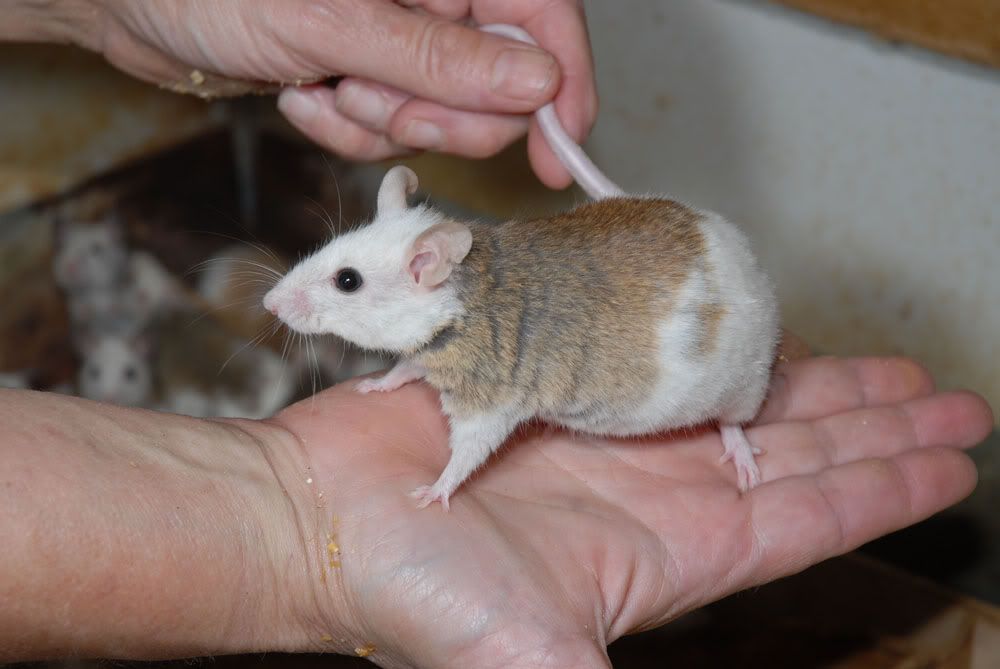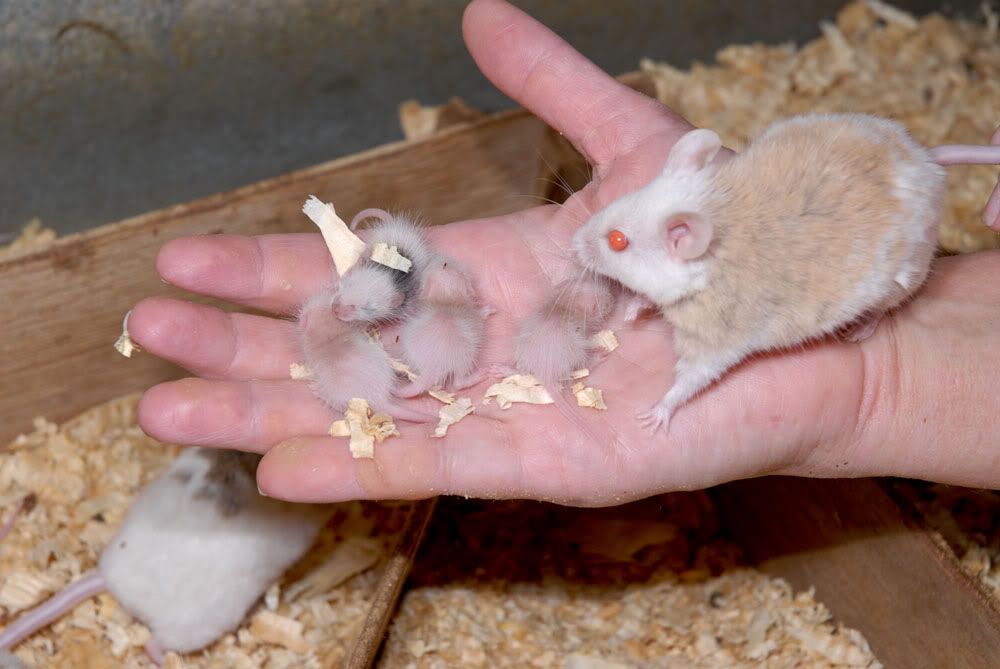kathylove
Pragmatic & Logical
I finally got Bill out to photograph some of my ASF and their cages.
First photo - one of 6 bins (2' x 4' each) that hold either ASF or regular rats. Note the water pipe - it goes into a small cage on the outside of the bin, and holds a dog "Lixit" for automatic water. There is a funnel underneath that drains the excess water, so it never goes into the cage. Also note the flat piece of cardboard - that covers their "burrow". The hamster wheel is wired to the top of the cage so it doesn't get mired down in the shavings.

This is what is under the cardboard. They like to burrow in the wild, so I give them my version of a burrow, using scrap pieces of wood and cardboard that will get dirty and / or chewed up in a couple of months. I often find moms and babies in one chamber, and other adults and weanlings in the other.

Large adult ASF. I haven't weighed mine, but they seem to be the size of large gerbils. I keep about 2.18 per bin, although sometimes a few more, or a few less.

Many people say they are vicious, but it seems to depend on bloodline. Mine don't seem any worse than my rats or mice.

First photo - one of 6 bins (2' x 4' each) that hold either ASF or regular rats. Note the water pipe - it goes into a small cage on the outside of the bin, and holds a dog "Lixit" for automatic water. There is a funnel underneath that drains the excess water, so it never goes into the cage. Also note the flat piece of cardboard - that covers their "burrow". The hamster wheel is wired to the top of the cage so it doesn't get mired down in the shavings.

This is what is under the cardboard. They like to burrow in the wild, so I give them my version of a burrow, using scrap pieces of wood and cardboard that will get dirty and / or chewed up in a couple of months. I often find moms and babies in one chamber, and other adults and weanlings in the other.

Large adult ASF. I haven't weighed mine, but they seem to be the size of large gerbils. I keep about 2.18 per bin, although sometimes a few more, or a few less.

Many people say they are vicious, but it seems to depend on bloodline. Mine don't seem any worse than my rats or mice.

